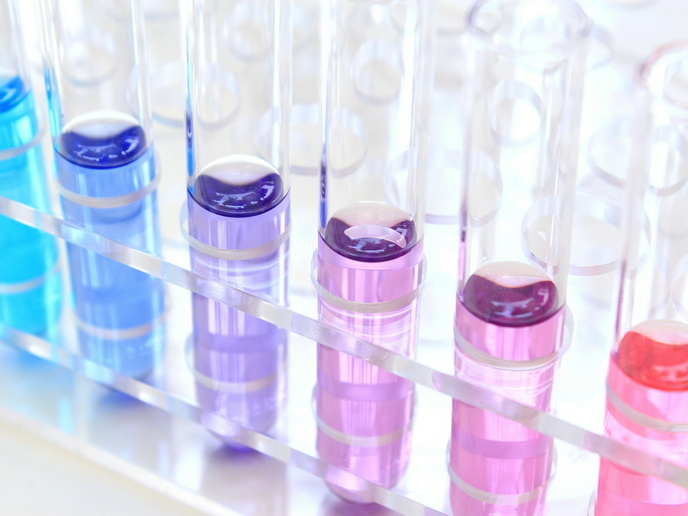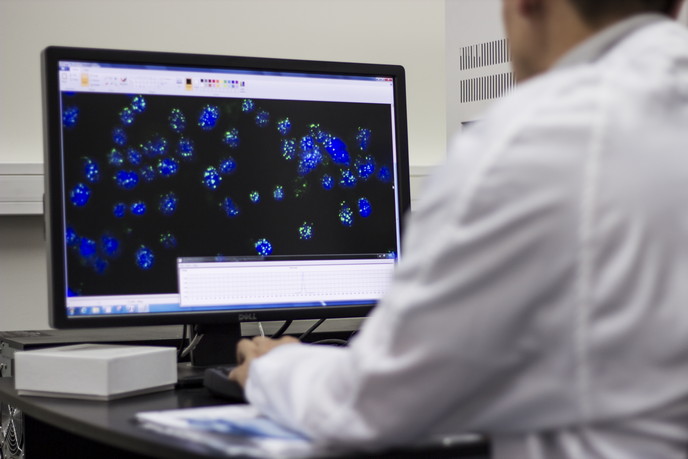Alternative therapies for treating rheumatoid arthritis
Rheumatoid arthritis (RA) is a chronic inflammatory disorder of the joints that affects up to 1 % of the population. The disease typically develops during adulthood, causing painful swelling and, in some cases, bone erosion and joint deformity. There is no cure for RA, and many patients don’t respond to the various medications available to manage the disease. The EU-funded SmallDrugRheuma (Discovery of Immune Therapeutic Targets and Immunomodulators for the Development of Novel Therapies in Rheumatoid Arthritis) project aims to fill this treatment gap. “Rather than taking a typical target-centric approach, my research works to integrate expertise on immunology and cutting-edge drug screening technologies,” says Iria Gomez-Tourino, a senior fellow in the Biofarma group, supervised by Mabel Loza, a professor at the University of Santiago de Compostela’s (Spain) Centre for Research in Molecular Medicine and Chronic Diseases (CiMUS). “The end goal is to create an unbiased, drug-centric approach to identifying novel immunomodulatory agents for RA.” Gomez-Tourino’s research was undertaken with the support of the Marie Skłodowska-Curie programme.
The tsDMARD advantage
Most RA cases are managed with anti-rheumatic drugs (DMARDs), which are available in various classes. For example, conventional synthetic disease-modifying anti-rheumatic drugs (csDMARDs) are effective at easing symptoms. However, they neither suppress disease progression nor target its actual cause. Although biological DMARDs (bDMARDs) have greater success at achieving disease remission, 20-40 % of patients fail to respond or achieve a significant improvement. “There is a clear need for alternative therapies,” comments Gomez-Tourino. “That alternative is targeted synthetic DMARDs (tsDMARDs).” TsDMARDs are small, low molecular weight molecules. As they can target intracellular components, the therapy increases the range of targeted pathways. Furthermore, tsDMARDs have the advantage of being administered orally, thus improving compliance and efficacy of the treatment. They are also cheaper to produce.
Paving the way to more effective RA treatment
Although still a work in progress, Gomez-Tourino is working to identify new tsDMARDs for RA. Leveraging the European Research Infrastructure Consortium EU-OPENSCREEN’s and USC’s extensive chemical libraries, along with the deep know-how in drug discovery of the host group, the project has already achieved a number of important results. One such result is the development, miniaturisation and validation of several assay technologies based on peripheral blood mononuclear cells (PBMC). An assay is a lab procedure for qualitatively assessing or measuring the presence, amount or activity of a targeted entity. “This is an invaluable, cutting-edge translational assay for high-throughput screening of compounds that uses primary, suspension cells,” explains Gomez-Tourino. “It’s applicable not only to our project, but also to the whole scientific community.” Another important outcome is the generation of what Gomez-Tourino calls an “immunomodulatory compound library”. The library consists of a list of 16 compounds that possess previously undescribed immunomodulatory effects. “Of these, 12 induced a reduction of proinflammatory cytokine secretion, one of the main causes of joint swelling and RA complications,” concludes Gomez-Tourino. “As such, they could contribute to controlling inflammatory conditions.” The project is currently working to validate these results by assessing the anti-inflammatory effect of the drug candidates in cells from naïve, responder and non-responder RA patients. After that, the research will progress to the early circular drug discovery process to patients, fulfilling its patient-centric vision.
Keywords
SmallDrugRheuma, rheumatoid arthritis, RA, immunology, Marie Skłodowska-Curie programme, anti-rheumatic drugs, DMARDs, targeted synthetic DMARDs, tsDMARDs







